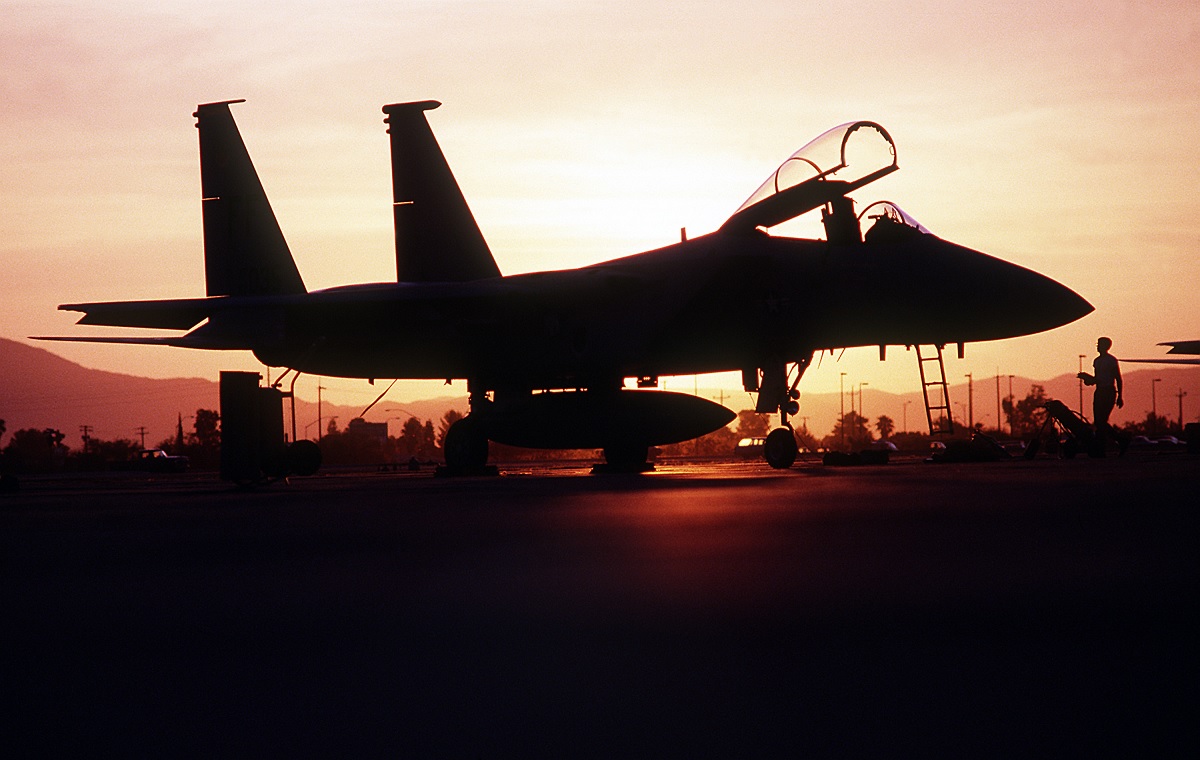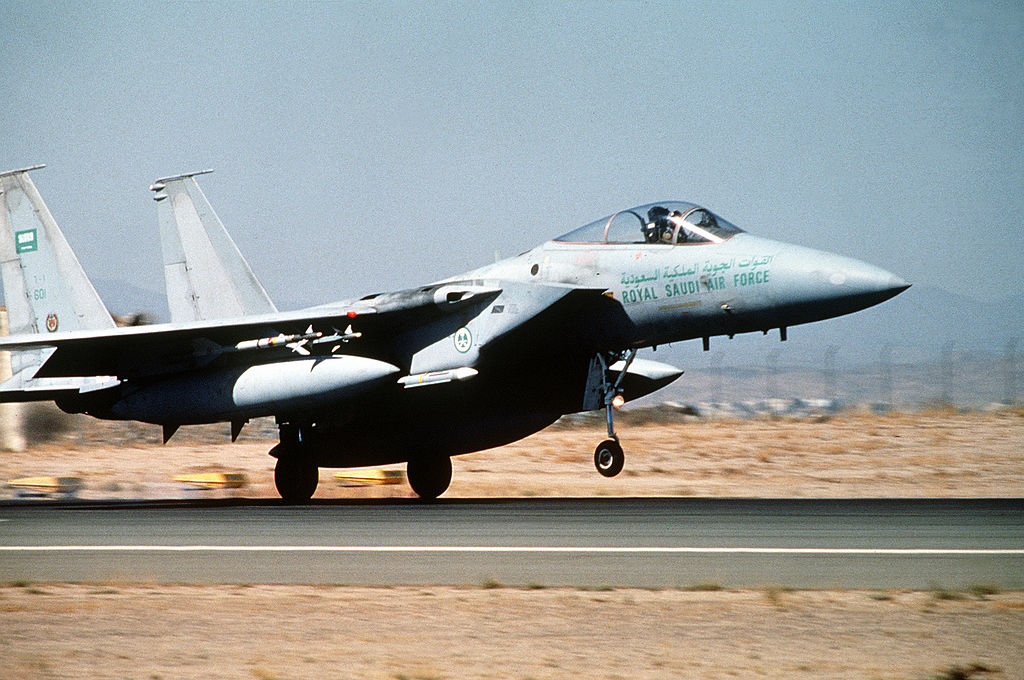The two Mirage kills achieved by RSAF F-15s were very certainly motivated by a political direction meant to highlight an Arab country. Existing sources indicate that the F1s were shot down just minutes after being able to engage their objectives
Under the Foreign Military Sales (FMS) program Peace Sun, the Royal Saudi Air Force (RSAF) ordered 16 F-15Ds and 46 F-15Cs (without some of the aircraft’s Tactical Electronic Warfare System components and sensitive radar modes). The purchase came after the Saudi monarchy made a concentrated effort to overcome a capability gap between the RSAF and the F-14 Tomcat aircraft of the Islamic Republic of Iran Air Force (IRIAF).
The U.S. administration had to take into account some very important political issues as a result of Peace Sun, not the least of which was how the sale was certain to be received by the ever-vigilant Israelis. The RSAF Eagles were downgraded to make them less effective, especially against avionics and weaponry produced in the United States, in order to reduce such tensions.
Nevertheless, in reaction to Operation Desert Shield in late 1990, 24 more jets were hurriedly delivered to the RSAF by U.S. Air Forces in Europe (USAFE) units.
According to Steve Davies in his book F-15C Eagle Units In Combat, on January 24, 1991, Capt. Ayehid Salah al-Shamrani, an F-15 pilot with No 13 Squadron, engaged and downed two Iraqi Air Force (IrAF) Mirage F1EQs, giving the RSAF its sole air-to-air victory during Operation Desert Storm. Although the details of the confrontation are vague, Davies was informed by American sources that Salah was pointed in the direction of the Mirages as soon as they were seen taking off and traveling toward coalition naval warships in the Persian Gulf.
According to reports, a USAF AWACS gave the RSAF Eagle strong vectors, but Salah supposedly found it difficult to accomplish the intercept. Salah was guided step-by-step into position behind the French-made fighters as time to get behind the Mirages, who were aiming their anti-ship Exocet missiles at the naval ships, was rapidly running out. The two AIM-9P Sidewinders he eventually used guided directly to their targets.

As reported by Donald J. McCarthy, Jr. in his book “The Raptors All F-15 and F-16 aerial combat victories,” after the engagement Salah commented during a media interview: “They started breaking in front of me, but it was too late. It was my day.”
One former F-15 pilot observed: “There are several very valid questions to ask about these kills. Firstly, why is the pilot of an aircraft designed to kill BVR doing a stern conversion to visual range without firing a shot? Secondly, where was his wingman during all this? Thirdly, he fired both missiles while they were still ‘caged’ if I remember correctly.”
According to Davies, it was routine procedure to “uncage” the seeker from the radar before firing since it allowed the pilot to confirm that the seeker was tracking the target. Within the fighter pilot community, it was considered a faux pas to “uncage.”
Unsurprisingly, during Desert Storm, RSAF F-15s were kept far from the “coalface,” flying what was known as “Goalie CAPs” for the remainder of the conflict. The RSAF Eagles were effectively placed in a position where they could not obstruct the efforts of the rest of the Coalition by “Goalie CAPs” that were deployed some distance below the Iraq/Saudi border.
The level of professionalism, skill, and pride among the RSAF is allegedly at best mediocre, despite one USAF pilot who did an exchange tour with them in the 1990s telling Davies that two specific Saudi F-15 pilots were the best Eagle pilots he had ever met.
It is almost clear that a political instruction intended to highlight an Arab nation was the driving force behind these two Mirage kills. The presence of nearby U.S. Navy F-14 Tomcats, which were claimed to have been in an equally favorable position to engage the Mirages and could have done so more quickly and competently, is perhaps the strongest circumstantial evidence in favor of this theory.
According to the information that is currently available, the F1s were shot down just minutes after being able to engage their objectives.
Photo by Tech. Sgt. Hans H. Deffner / U.S. Air Force


